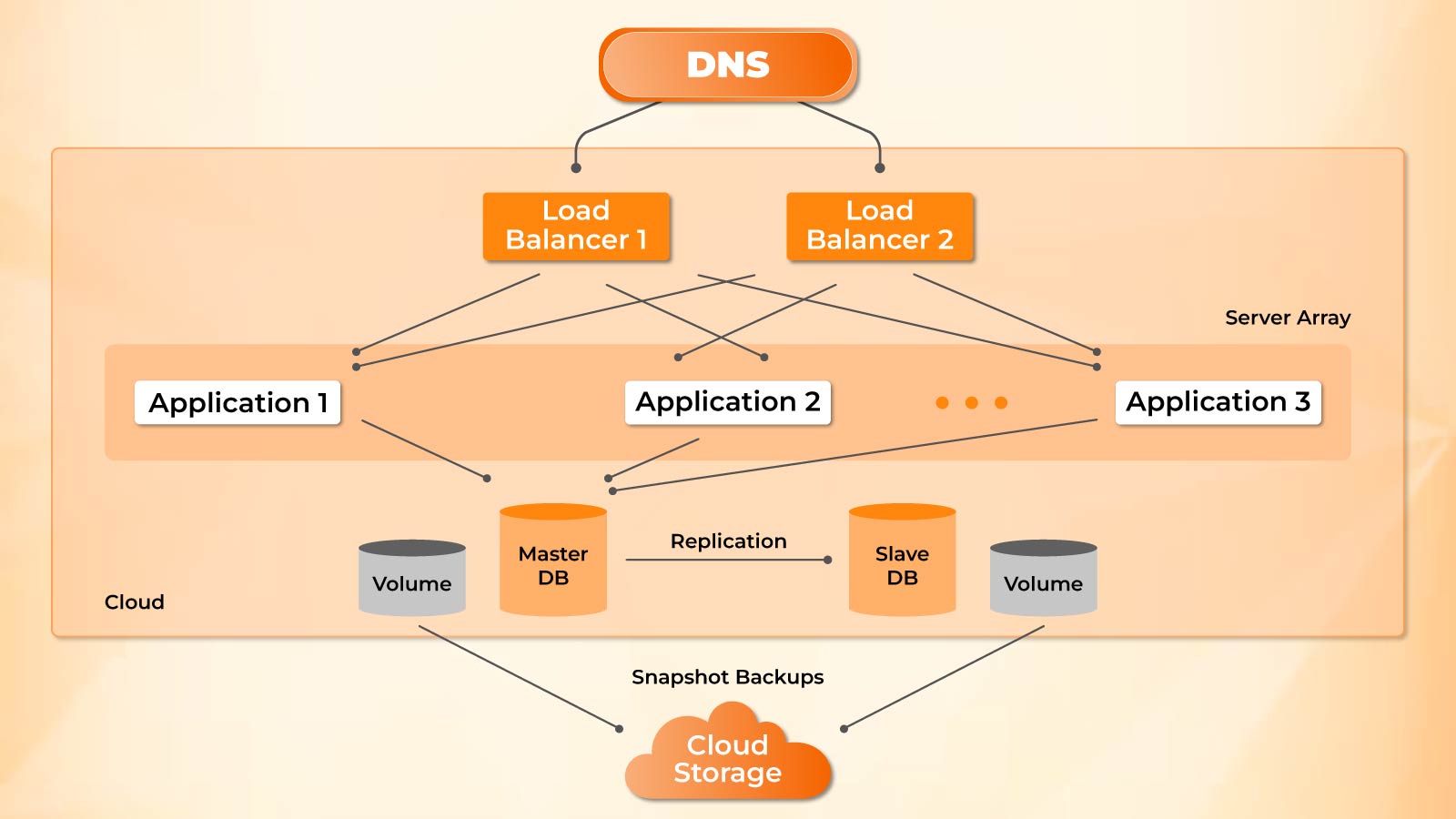As enterprises accelerate their digital transformation journeys, the shift towards multi-cloud architectures has become a strategic imperative. According to recent industry reports, nearly 90% of large organizations have already adopted multi-cloud strategies to optimize their digital infrastructure. This approach allows enterprises to leverage the strengths of various cloud service providers, enabling them to enhance performance, reduce latency, and optimize costs by selecting the most suitable cloud solutions for their specific needs.
The adoption of multi-cloud environments empowers organizations to distribute workloads across multiple public and private clouds, thus ensuring better availability and resilience. However, this inherently complex architecture comes with its own set of challenges. Integrating and managing diverse cloud platforms, each with unique management interfaces, APIs, and security frameworks, can create significant operational complexities. The lack of a unified approach to cloud security and compliance often leaves Chief Technology Officers (CTOs) grappling with fragmented security policies and limited visibility into their organization’s overall security posture.
Despite the clear advantages, the implementation of multi-cloud strategies requires a well-thought-out design to overcome potential pitfalls. Ensuring a consistent security framework across different cloud environments is crucial to mitigate the risk of data breaches, ensure compliance, and achieve maximum resilience.
This article explores the key considerations for designing and securing multi-cloud architectures, focusing on best practices to maximize resilience and reduce the risk of downtime, all while maintaining cost efficiency.
Understanding the Multi-Cloud Architecture Framework
A multi-cloud architecture involves the strategic use of services from two or more public cloud providers, offering organizations a flexible approach to managing their computing resources. By leveraging multiple cloud environments, enterprises can distribute workloads more effectively, reduce the risk of downtime, and protect against data loss. This approach not only minimizes dependency on a single cloud vendor but also allows businesses to take advantage of the unique capabilities and strengths offered by different cloud platforms.
 The multi-cloud framework provides several key benefits, enabling organizations to optimize their cloud strategies based on specific needs. By adopting a multi-cloud approach, businesses can:
The multi-cloud framework provides several key benefits, enabling organizations to optimize their cloud strategies based on specific needs. By adopting a multi-cloud approach, businesses can:
- Maximize Provider Capabilities: Leverage the best-in-class features of each cloud provider to enhance performance and functionality.
- Mitigate Single Provider Risks: Reduce the impact of outages by distributing workloads across multiple vendors, ensuring higher availability and resilience.
- Avoid Vendor Lock-In: Enhance flexibility by avoiding dependency on a single cloud provider, making it easier to switch vendors as needed.
- Optimize Regional Availability: Improve service delivery by leveraging cloud regions closer to end-users, thus reducing latency.
- Streamline Compliance and Audits: Use diverse cloud environments to address specific regulatory and compliance requirements more effectively.
- Capitalize on Multi-Cloud Economics: Optimize cloud spending by selecting cost-effective services and pricing models, ultimately increasing profitability.
Types of Multi-Cloud Architecture Designs
When building highly scalable and reliable applications, adopting a multi-cloud architecture is an effective strategy. It enables organizations to leverage multiple cloud services for improved performance, availability, and cost optimization. Below are some key multi-cloud architecture designs, each offering distinct advantages and challenges:
1. Cloudification
In a cloudification architecture, application components initially hosted on-premise are migrated to a multi-cloud environment. Once migrated, these components can leverage different cloud services to enhance performance and availability.
Benefits:
- Improved availability through re-hosting applications across multiple cloud platforms.
- Reduced vendor lock-in by using services from multiple cloud providers.
2. Multi-Cloud Relocation
In this architecture, application components are re-hosted entirely on a cloud platform. After migration, these components can integrate services from multiple cloud providers to enhance capabilities and flexibility.
Benefits:
- Increased availability and resilience by hosting applications across multiple clouds.
- Flexibility to avoid vendor lock-in and select the most suitable cloud services for different workloads.
3. Multi-Cloud Refactor
Multi-cloud refactoring involves re-architecting applications for deployment across multiple cloud environments. In this approach, applications are broken down into smaller, independent components that can be optimized and deployed on different clouds based on usage patterns.
Benefits:
- Optimal scalability and performance by deploying high-usage components independently.
- Increased agility, allowing organizations to respond quickly to changes in business or IT requirements.
Challenges:
- Modernization is often driven by technical needs, requiring a reevaluation of architecture for multi-cloud deployment.
- The bottom-up approach to component architecture may need adjustment for a multi-cloud environment.
4. Multi-Cloud Rebinding
This design involves deploying application components across multiple clouds with a focus on disaster recovery. When a failure occurs in the primary cloud platform, the secondary deployment ensures continuity of service.
Benefits:
- Improved system responsiveness as traffic is routed to healthy services after recovery.
- Greater fault tolerance by distributing applications across cloud platforms.
Challenges:
Potential downtime during failover, as this architecture does not guarantee seamless switching between platforms.
5. Multi-Cloud Rebinding with Cloud Brokerage
In this variation, cloud brokerage services are introduced to manage multi-cloud deployments. This architecture provides flexibility by integrating components across cloud platforms and enabling secondary deployments during a failure.
Benefits:
- Similar to multi-cloud rebinding, traffic can be redirected to healthy services during recovery, improving system resilience.
- Cloud brokerage adds flexibility in choosing services from multiple providers, enhancing cost efficiency and performance.
Challenges:
As with multi-cloud rebinding, there is no guarantee of a seamless failover, resulting in potential downtime.
6. Multi-Application Modernization
In this architecture, multiple on-premise applications (A1/A2, AC1) are re-architected as a unified portfolio for deployment on cloud platforms. This approach allows organizations to modernize and optimize multiple applications in parallel.
Benefits:
- Provides consistency in information and rules across shared components.
- Reduces operational and maintenance costs for components shared across applications.
Challenges:
Lack of business commitment to shared capabilities can hinder the full potential of this architecture.
Process of Implementing Multi-Cloud Architecture
1. Disaster Recovery
Multi-cloud environments enable businesses to establish redundancy and disaster recovery strategies in cloud-native deployments. The most common approach is the 3-2-1 backup strategy, where data is stored in three copies: two on different media types and one off-site. With the shift to cloud computing, backup data is often stored in multiple clouds instead of on-premises, offering faster recovery speeds.By storing production and backup data across different cloud providers, organizations mitigate risks associated with data loss. In the event of a disaster or ransomware attack, businesses can restore data from a cloud provider that uses immutability tools like Object Lock to protect data.
2. Failover
Multi-cloud strategies are used for failover purposes, where businesses maintain mirrored copies of their active production data across different clouds. If one cloud service experiences downtime, the system can switch to a secondary cloud provider, ensuring high availability and minimal disruption.
For example, using Amazon S3 and Backblaze B2 Cloud Storage, a business can host data on both providers. If one cloud experiences an outage, the content delivery network (CDN) can pull data from the backup cloud, maintaining service continuity.
3. Data Sovereignty
Data sovereignty refers to the legal and regulatory requirements regarding where and how data can be stored, particularly in regions like the European Union, where strict data residency laws exist. Multi-cloud architectures allow businesses to use different cloud providers with data centers located in specific geographic regions to comply with local data residency regulations. This approach ensures that data storage and processing align with government mandates.
4. Access to Specialized Services
Organizations often require specialized or complementary cloud services to support unique workloads, such as compute resources, storage, or content delivery services. Multi-cloud architectures provide the flexibility to choose the best provider for each specific need. For instance, a business may leverage Google Cloud for its high-performance computing resources while storing its data in a cloud provider optimized for storage, like Amazon Web Services or Microsoft Azure. This ensures that each cloud service is used for its strongest capabilities.
Also Read: CIO Influence Interview with Eric Olden, CEO and Co-founder of Strata Identity
How to Secure Multi-Cloud Architecture
Securing a multi-cloud environment is essential to protect sensitive data, ensure compliance, and maintain the integrity of your applications. Here are key strategies to strengthen the security of your multi-cloud architecture:
1. Use a Unified Management and Governance Platform: Implementing a unified management and governance platform helps enforce consistent security policies across all cloud providers. This approach simplifies compliance reporting and minimizes the risk of misconfigurations that could expose your infrastructure to vulnerabilities. By centralizing control, you can ensure that security standards are uniformly applied across your entire cloud ecosystem.
2. Implement a Comprehensive Identity and Access Management (IAM) Strategy: Robust IAM is crucial for controlling access to your multi-cloud resources. A comprehensive strategy should include:
- Role-Based Access Control (RBAC): Restrict user permissions based on their job roles, reducing the risk of unauthorized access.
- Multi-Factor Authentication (MFA): Add an extra layer of security by requiring users to verify their identities using multiple authentication methods.
- Centralized User Account Management: Streamline user account creation, management, and deactivation to prevent security gaps.
3. Use Encryption for Data at Rest and in Transit: Encryption is a critical layer of defense in multi-cloud environments. By encrypting data both at rest and in transit, you protect sensitive information from unauthorized access, even if the data is intercepted or accessed by unauthorized parties. Ensure that your encryption keys are securely managed and rotated regularly.
4. Monitor and Analyze Logs and Events: Continuous monitoring is vital for detecting potential security incidents. By analyzing logs and events across your multi-cloud infrastructure, you can quickly identify suspicious activities and take immediate action to mitigate risks. Implement automated tools that provide real-time alerts and insights into unusual behaviors.
5. Regularly Conduct Vulnerability Assessments and Automated Penetration Testing: Regular vulnerability assessments and penetration testing are essential for identifying potential security weaknesses in your multi-cloud infrastructure. Automated testing tools can simulate attacks on your system to uncover vulnerabilities before they can be exploited by malicious actors. Conduct these assessments periodically to stay ahead of emerging threats.
Also Read: As GenAI Democratizes Bots, Cybersecurity Must Evolve to Understand Their Intent
Future of Multi-cloud Architecture
The future of multi-cloud architecture is poised to transform IT infrastructure management by enhancing flexibility, security, and resilience. As businesses increasingly adopt multi-cloud strategies, cloud providers are advancing interoperability, making it easier to integrate services across platforms. Expect AI-driven automation for smarter workload distribution, optimized costs, and real-time resource management. The focus on unified security frameworks and compliance will intensify, addressing data protection and regulatory requirements across regions. Additionally, the rise of cloud-native applications, multi-cloud DevOps, and edge computing integration will empower organizations to leverage diverse cloud capabilities, reduce latency, and improve agility, setting the stage for a more efficient, scalable, and resilient digital ecosystem.
[To share your insights with us as part of editorial or sponsored content, please write to psen@itechseries.com]


